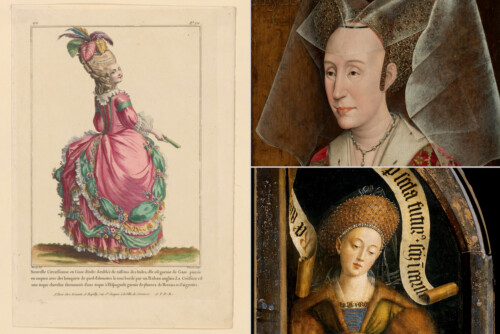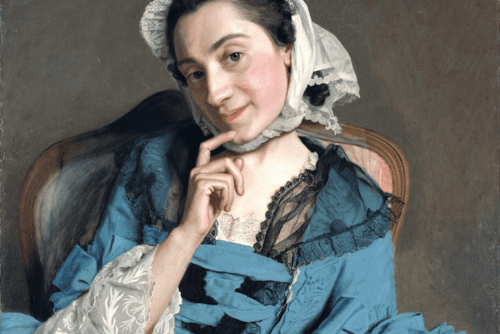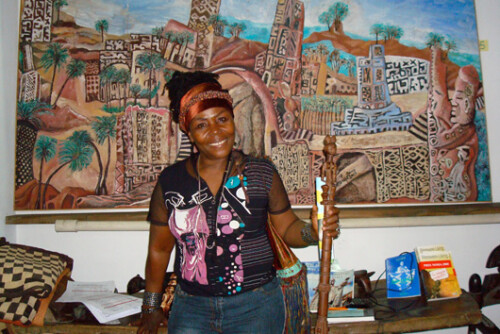“My dear! … God has so richly given you His grace so that you … personally see and are acquainted with His kingdom, which is concealed from so many people.”1
In December 1524, Martin Luther (1483–1546), a theologian from Wittenberg, wrote these words to Katharina Schütz Zell (1498–1562), an evangelical activist and pamphleteer from Strasbourg, after Schütz Zell married an evangelical pastor and published a treatise to defend her marriage and her husband. Why did Luther regard Schütz Zell as exalted by God’s grace? How did Schütz Zell understand her role and justify her writing and, more broadly, her agency? Was Luther keen to approve women’s public agency in general, or was Schütz Zell a special case? In this essay, I focus on women’s agency and its reception in Germany2 during the 1520s through a microhistorical analysis of these two German contemporaries.3
As one of the most influential leaders of the German Reformation, Luther’s theological views were widely adopted among his contemporaries. His general, often rather theoretical, remarks on women and femininity were also widely adopted and shared. However, his view on the agency of real-life women was less known in the sixteenth century, as it has long been in modern research.4 The gender-sensitive scholarship of the past decades has begun to diversify readings of the Reformation and of men like Luther, and to give voice to women and minorities – participants formerly regarded as unimportant to the movement’s history.5 Schütz Zell is one example of those women whose significance in the Reformation has been acknowledged only recently.6 Significant work remains if discourse is to progress from the “add women and stir” approach that Merry Wiesner-Hanks so aptly describes.7
Gender analysis of the Reformation often focuses on men’s writings about women or on women’s writings, but rarely on the interaction between the two, as Charlotte Methuen argues.8 In this essay, I examine this interaction by analyzing three Reformation texts between Schütz Zell and Luther: Schütz Zell’s treatise, Luther’s letter to Schütz Zell, and Luther’s select yet representative work from the early 1520s. I use “agency” to refer to an individual’s ability to act on behalf of herself, but also on behalf of others. I use “the use of power” to refer to an individual’s ability to influence others’ behavior.9 I analyze Schütz Zell’s agency and self-authorization – that is, her way of authorizing both herself and her actions – as well as discuss Luther’s view on women’s (lack of) power in general and Schütz Zell’s agency in particular. I argue that both Luther and Schütz Zell treated her as a special case among women and were thus ready to surpass the then-limits of her gender.
Women’s Agency in Reformation Scholarship
When modern Reformation scholarship has turned to women, it has tended to concentrate on elite, especially royal, women.10 Fragmentary primary sources limit possible research and make sophisticated analysis difficult at best.11 So does the way that scholars pose questions. Research over the last few decades has broadened the investigation into women’s agency.12 Scholars’ understanding of the concept of power has expanded from simply official political relations to include sociocultural relations, such as those within families.13 Another major change is the way in which “women’s studies” has been redefined as “gender studies,” with a focus not only on women, but also on comparative aspects of different genders, and on examining men’s experiences as men and not as representatives of humankind.14 As a result of this shift, modern research on the Reformation includes discussion of how gender affects the way an individual experiences authority, and how women and men were able to make choices within the limits of social structures.15
In Lyndal Roper’s 1989 discussion of the Reformation and its impact on gender dynamics, she argues that “the politics of the Reformation gave voice to the interests and perceptions of the married craftsmen who ruled over their wives and organized the household’s subordinate labor force of men and women.”16 Roper criticizes the interpretations of scholars such as Steven Ozment, who suggests that the Reformation improved the social status of both women and men and that household power relations became more equal than before.17 The question of the Reformation’s impact on women and of women’s impact on the Reformation remains relevant yet unanswered, as Wiesner-Hanks shows.18 It seems, in any event, that the ideals and norms regarding women did not undergo major changes during the sixteenth century.19 Therefore, the 1520s are particularly interesting as they gave lay people, both women and men, the opportunity to speak and write publicly.
Although Martin Luther’s ninety-five theses in 1517 were the Reformation’s starting shot, ideological differentiation had been brewing in Germany from at least the fourteenth century.20 At the beginning of the sixteenth century, religious, political, and sociopolitical questions such as the power relationships between electors and bishops, and concerning the fate of monasteries and convents and their inhabitants, came under heated dispute. Clerical marriage was the subject of considerable contention, as evangelicals began to favor it in the early 1520s. Thomas Kaufmann even maintains that clerical marriage was profoundly linked with the whole question of evangelical identity.21 The decade of social, political, and ecclesiastical turmoil that lacked socially constructed behavioral scripts – a feature of times of rapid change –gave room for especially lay people.22 Their opportunity to act began to diminish at the turn of the decade at the latest – possibly even by 1525, as Ulrike Zitzlsperger suggests. Because of social disturbances, such as the Peasants’ War that broke out in 1524 after a long period of smoldering and was repressed in 1525, laypeople began to be increasingly supervised as part of efforts to stabilize the evangelical movement.23
Women’s agency in the 1520s has garnered particular attention in modern Reformation studies, with varying treatments. Some scholars argue that women’s agency then, examined in the context of a longer historical time frame, is relatively insignificant.24 Others argue that women’s agency is remarkable in spite of the brevity of the time period concerned. An example of this line of thinking is Ulrike Zitzlsperger, who remarks that even though power and authority remained in the hands of theologians towards the end of the decade, especially after the Peasants’ War, many women made “a lasting impact on their male contemporaries” during this period.25
- Martin Luther to Katharina Schütz Zell (17 December 1524) in D. Martin Luther’s Werke: Kritische Gesamtausgabe, Briefwechsel, Weimar 1930–1985, 3, no. 808, 405–6. References will be abbreviated to WA BR. Translations are my own unless otherwise specified. [↩]
- By “Germany” I refer to Heiliges Römisches Reich Deutscher Nation, which at its broadest included parts of modern Germany, Austria, Slovenia, Switzerland, Belgium, Luxembourg, the Netherlands, the Czech Republic, eastern France, northern Italy, and western Poland. [↩]
- Charlotte Methuen takes a similar setting, but discusses Luther and four contemporaneous women – including Katharina Schütz Zell. Charlotte Methuen, “‘And Your Daughters Shall Prophesy!’ Luther, Reforming Women and the Construction of Authority,” Archiv für Reformationsgeschichte 104 (2013): 82–109. [↩]
- For studies of Luther and women, see Mickey L. Mattox, Defender of the Most Holy Matriarchs: Martin Luther’s Interpretation of the Women of Genesis in the Enarrationes in Genesin, 1535–1545 (Leiden: Brill, 2003); Kristen E. Kvam, “Equality in Eden? Gender Dynamics and Luther’s Lectures on the Creation of Adam and Eve,” Seminary Ridge Review 6 (2004): 5–18; Else-Marie Wiberg Pedersen, “A Man Caught between Bad Anthropology and Good Theology? Martin Luther’s View of Women Generally and of Mary Specifically,” Dialog: A Journal of Theology 49 (2010): 190–200. See also the edited collection of several of Luther’s texts relating to women: Susan Karant-Nunn and Merry E. Wiesner-Hanks, Luther on Women: A Sourcebook (Cambridge: University Press, 2003). [↩]
- The need to bring forward not only women but also other forgotten groups of the Reformation has produced several fascinating studies. See, for example, Päivi Räisänen-Schröder, Ketzer im Dorf: Visitationsverfahren, Täuferbekämpfung und lokale Handlungsmuster im frühneuzeitlichen Württemberg (Konstanz: UVK Verlagsgesellschaft, 2011). [↩]
- Especially Elsie Anne McKee has brought her significance forward. See Elsie Anne McKee, Katharina Schütz Zell, vol. 1, The Life and Thought of a Sixteenth-Century Reformer, and vol. 2, The Writings: A Critical Edition (Leiden: Brill, 1999); “Katharina Schütz Zell,” in
The Reformation Theologians: An Introduction to Theology in the Early Modern Period, ed. Carter Lindberg (Oxford: Blackwell, 2002), 225–37. [↩] - Wiesner, “Beyond”; Merry E. Wiesner-Hanks, “Women, Gender, and Church History,” Church History 71 (2002). [↩]
- Methuen, “Reforming Women,” 84. While several historical studies do discuss the interactions between women and men, they often focus on the Middle Ages. A novel contribution is, for example, Fiona J. Griffiths and Julie Hotchin, eds., Partners in Spirit: Women, Men, and Religious Life in Germany, 1100–1500 (Turnhout: Brepols, 2014). See also Mary C. Erler and Maryanne Kowaleski, eds., Gendering the Master Narrative: Women and Power in the Middle Ages (Ithaca: Cornell University Press, 2003). [↩]
- Compare Päivi Salmesvuori, “Power and Authority: Birgitta of Sweden and Her Revelations,” (PhD diss., University of Helsinki, 2009), 25, 28. [↩]
- Albrecht Classen and Tanya Amber Settle, “Women in Martin Luther’s Life and Theology,” German Studies Review 14 (1991): 232; James Daybell, “Introduction: Rethinking Women and Politics in Early Modern England,” in Women and Politics in Early Modern England, 1450–1700, ed. James Daybell (Aldershot: Ashgate, 2004), 1–2. [↩]
- Merry E. Wiesner, “Beyond Women and the Family: Towards a Gender Analysis of the Reformation,” Sixteenth Century Journal 18 (1987): 314–15. See also Methuen, “Reforming Women,” 83. [↩]
- One interesting example is Merry E. Wiesner-Hanks, ed., Mapping Gendered Routes and Spaces in the Early Modern World (Burlington: Ashgate, 2015). [↩]
- Merry E. Wiesner-Hanks, Women and Gender in Early Modern Europe: New Approaches to European History (Cambridge: Cambridge University Press, 2011), 276–7. [↩]
- Wiesner-Hanks, Women and Gender, 276; Wiesner-Hanks, “Women, Gender, and Church History,” 601, 610. [↩]
- Ulinka Rublack, “Gender in Early Modern German History: An Introduction,” German History 17 (1999): 1. Taking gender into account as one of the categories of historical research has only begun. See Wiesner, “Beyond”; Wiesner-Hanks, “Women, Gender, and Church History.” [↩]
- Lyndal Roper, The Holy Household: Women and Morals in Reformation Augsburg (Oxford: Oxford University Press, 1989), 3. [↩]
- Steven Ozment, When Fathers Ruled: Family Life in Reformation Europe (Cambridge: Harvard University Press, 1983), 99. [↩]
- Wiesner-Hanks, “Women, Gender, and Church History,” 609. [↩]
- See Susan Karant-Nunn, “Continuity and Change: Some Effects of the Reformation on the Women of Zwickau,” Sixteenth Century Journal 13 (1982): 17–42; Sari Katajala-Peltomaa and Raisa Maria Toivo, Noitavaimo ja neitsytäiti: Naisten arki keskiajalta uudelle ajalle (Jyväskylä: Atena, 2009), 223–37; Joan Scokir and Merry E. Wiesner-Hanks, Convents Confront the Reformation: Catholic and Protestant Nuns in Germany (Milwaukee: Marquette University Press, 2010), 11. Gabriele Jancke, among others, poses explicitly the question: “Did Women Have a Reformation?” Gabriele Jancke, “Publizistin – Pfarrfrau – Prophetin. Die Strassburger ‘Kirchenmutter’ Katharina Zell,” in Frauen mischen Sich ein: Katharina Luther, Katharina Melanchthon, Katharina Zell, Hille Feicken und andere, Wittenberger Sonntagsvorlesungen (Wittenberg: Evangelisches Predigerseminar, 1995), 55. [↩]
- Katajala-Peltomaa and Toivo, Noitavaimo, 227. [↩]
- Thomas Kaufmann, “Pfarrfrau und Publizistin: Das Reformatorische Amt der Katharina Zell,” Zeitschrift für Historische Forschung 23 (1996): 169–74. For debates on clerical marriage especially from the 1520s onward, see Marjorie Plummer, From Priest’s Whore to Pastor’s Wife: Clerical Marriage and the Process of Reform in the Early German Reformation (Farnham, Burlington: Ashgate, 2012). For the wider historical continuum regarding clerical marriage, see Helen Parish, Clerical Celibacy and Clerical Marriage in the West, c. 1100–1700 (Farnham, Burlington: Ashgate, 2010). [↩]
- The general remark is made in Ulinka Rublack, “Meanings of Gender in Early Modern German History,” in Gender in Early Modern German History, ed. Ulinka Rublack (Cambridge: Cambridge University Press, 2002), 6. [↩]
- Ulrike Zitzlsperger, “Mother, Martyr and Mary Magdalene: German Female Pamphleteers and Their Self-Images,” History 88 (2003): 379. [↩]
- Lyndal Roper’s work is representative of this attitude. See Roper, Holy Household, 2. [↩]
- Zitzlsperger, “Mother,” 379–80. On Luther’s relations to his women contemporaries, see Classen and Settle, “Women,” 231–60. [↩]




